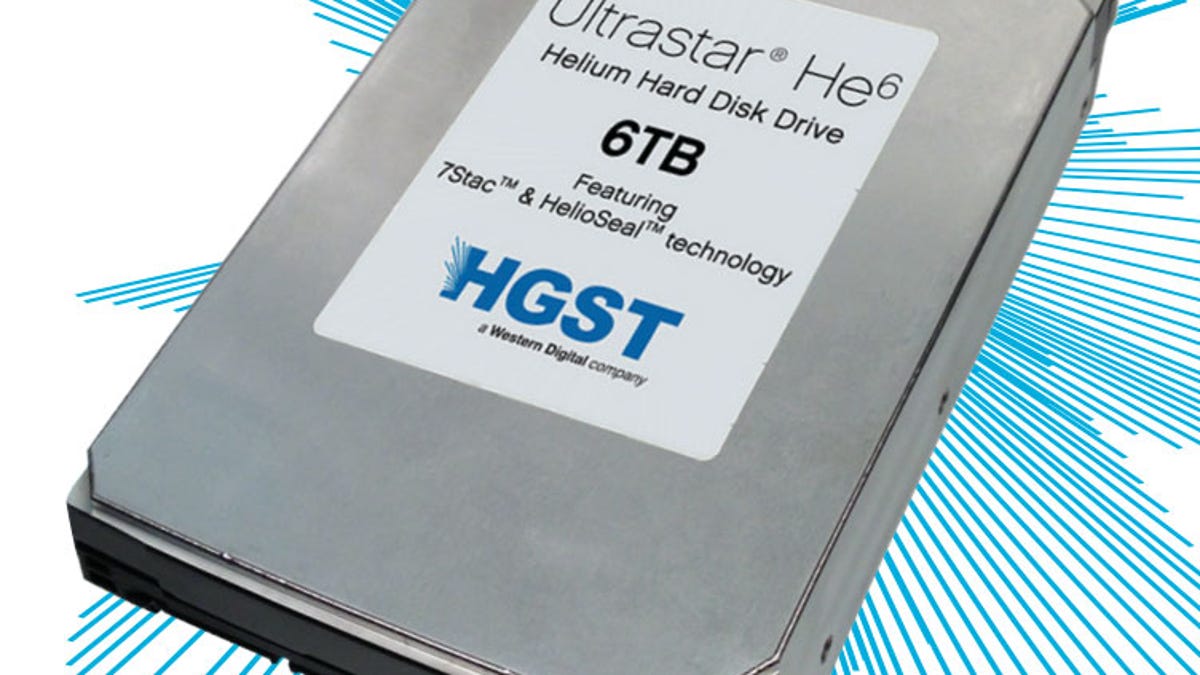Western Digital enlists helium for 6TB energy-efficient drives
Mammoth data centers need more data capacity and lower power consumption. The new Ultrastar He6 drives float a new concept for achieving those ends.

There's a new use in town for helium besides supercooling electromagnets at the Large Hadron Collider and making your voice sound freakishly high-pitched: improving the capacity and efficiency of hard drives.
Western Digital on Monday announced that its HGST subsidiary has begun shipping the new 6-terabyte Ultrastar He6 hard drive, a model that seals the spinning disk platters inside a hermetic chamber filled with helium instead of air.
Because helium has just one-seventh the density of air, using it reduces the turbulence caused by spinning disks and the heads that constantly move above them to read and write data. That, in turn, means lower power consumption and less waste heat in the data centers where these drives are designed to be used. Specifically, WD said the power used per terabyte drops 49 percent.
The lower turbulence also increases the drive's capacity because more platters can be squeezed into the 3.5-inch housing. Today's 4-terabyte models use five platters and top out at 4TB, but the Ultrastar He6 has seven platters and reaches 6TB of capacity. That's also useful for data centers where space is at a premium.
Hard drives are under competitive pressure from flash memory, which is faster and quieter but which costs a lot more per gigabyte.
The helium-based concept will be the basis for new designs that Western Digital has in the works to keep hard drives in the capacity lead with better areal density -- in other words, more bits per square inch of each platter.
"HGST's helium platform will serve as the main platform for new technologies like shingled magnetic recording (SMR) and heat-assisted magnetic recording (HAMR) where HGST will continue to push the HDD areal density envelope," Western Digital said in its announcement. "The helium platform will also serve as the future building block for new, growing market segments such as cold storage, a space that HGST plans to address over the next couple of years."
"Cold storage" refers to data that's needed only infrequently but that must be accessible relatively quickly -- not something like company e-mail archives and purchasing records that are dumped onto tape storage that's really slow but really cheap per byte. The Ultrastar He6 consumes 23 percent less power when idling than 4TB drives, WD said.

